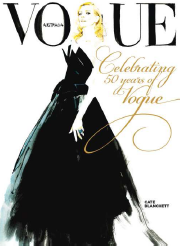Are magazines frozen in time?
 Amid ongoing reports of the death of print, Carat’s Christine McKinnon looks at some possible future revenue streams for magazine publishers.
Amid ongoing reports of the death of print, Carat’s Christine McKinnon looks at some possible future revenue streams for magazine publishers.
Two weeks ago I walked into a news agency to retrieve my subscriber copy of the News Corp Disney Frozen book and CD.
As I walked in something seemed out of place. The stationery was along the walls as it always had been; the middle aisle, however, was full of extracurricular study books for primary school students. I wandered over to the counter and asked nervously “where are your magazines?”
The owner smiled, and yes, with pity said: “we don’t sell magazines anymore…no one bought them – we had too many returns – we make more money out of text books.”
There was not a single magazine to be seen – not even a Woman’s Weekly or a Delicious. It was a Twilight Zone moment, a one way moment. There was no going back. “We don’t sell magazines anymore.”
It was over.
Recently Mumbrella’s Tim Burrowes highlighted the plummeting numbers of the print industry, lamenting that he was the only newspaper subscriber in an inner city apartment building of 500 units.
Burrowes concedes that he is a ‘rusted on’ subscriber driven by his love of quality journalism – as am I.
I felt sad and slightly panicked. I bombarded myself with questions: How will magazines survive as digital only brands? How will people find them and will they pay for them?
Historically magazines have played a role in status and self-image – how will that continue if you can’t be seen with them? Will social media be enough to keep that alive?
What does a mainly digital magazine have to do to build or maintain a strong brand?
Martin Wiegel, a noted planner in Amsterdam, recently wrote about the ability of digital brands to build a strong brand. He references the levers of brand building as utility, price, and presence, and their multipliers as time, investment, and creativity – until now…
Magazines in their traditional form historically had a great presence – both physical presence (beingvisible and easily buyable) and mental presence (being easily thought of).
Distinct brands with history, posters out the front of newsagents, a presence on public transport, coffee tables and in doctors surgeries. Their ‘value’ via cover prices & cover subjects said as much about the reader as the content.
Moving into tomorrow how important will a physical presence be? A tangible signature to identify with that distinctive feel and look of magazines – their stock, their covers.
 We are starting to see some iconic magazine brands creating physical spaces that capture the essence of their brand. Vogue has expanded into luxury cafes and lounges in cities like Dubai, Kiev, Bangkok and Moscow. Vogue’s elegant brother GQ has expanded into GQ Bar ‘offering sharp andsmart men a stylish haven in which to enjoy unique spirits, rare wines and carefully crafted cocktails alongside a refined international menu. Service is genuine yet effortless, creating a familiar and inviting atmosphere.’
We are starting to see some iconic magazine brands creating physical spaces that capture the essence of their brand. Vogue has expanded into luxury cafes and lounges in cities like Dubai, Kiev, Bangkok and Moscow. Vogue’s elegant brother GQ has expanded into GQ Bar ‘offering sharp andsmart men a stylish haven in which to enjoy unique spirits, rare wines and carefully crafted cocktails alongside a refined international menu. Service is genuine yet effortless, creating a familiar and inviting atmosphere.’
Monocle Magazine has created another avenue of brand availability by opening Monocle Café in London and Tokyo. Martha Stewart Cafe will opening a Café in the building that hosts her offices in Manhattan, in response to declining magazine sales delivering annual losses to the tune of $1.8m.
For those in search of an experience more grand there is Tatler Club in Moscow.
There is something very interesting in magazines allowing access to a lifestyle that they write about and photograph. This suggests a shift from the traditional voyeurism to participation and facilitation.
On the flipside we have digital only brands producing physical magazines. Air B&B is now producing its quarterly online magazine Pineapple in a printed form ”to build physical connections with people beyond digital media storytelling”.
“Printed matter gives a real sense of permanence and credibility to the stories the company is telling,” said Andrew Schapiro, Airbnb’s head of brand creative. “This is about taking the brand out of the internet and into the home,” he added. “The magazine can be shared by hosts with their guests; it is a tangible item that we want to last weeks, months, and years in homes.”
So is this catch up or is Schapiro ahead of his time?
What is the long term outlook financially for the digital versions of iconic titles?
We know that digital print subscription models are about to implode. As Chris Anderson first wrote in Wired magazine: “It’s now clear that practically everything web technology touches starts down the path to gratis, at least as far as we consumers are concerned.”
Recent we saw it reported in The Australian that digital sales of some major titles had declined significantly while across the board we were starting see digital subs plateau. Peter Zavecz, CEO of Pacific Magazines commented to the Australian. “(The downturn in print) didn’t affect usas quickly as newspapers,” Zavecz said. “(Consumer) uptake (of digital editions) hasn’t been as strong as it could have been and we’re working through that. What magazines haven’t done is bundle like newspapers. Probably the next phase for growth is going to be by the bundle. It may be complementary content in the digital version.”
Bundles sound interesting to this magazine addict.
Arguably the most successful trans-platform brand Vogue Australia rose 16.8 per cent to 1,808. I spoke to Nick Smith, publisher style and lifestyle at NewsLifeMedia. Smith has seen steady growth with digital subscriptions of Vogue. He calmed my panic of the magazine-less newsagency with news of the growth in physical magazine sales in supermarkets saying: “We’re seeing a proliferation of channels, growth in supermarkets and we are starting to see more titles demographically ranged at checkout.”
In response to my question of whether iconic magazine brands can be sustained in the digital only realm, Smith cited a change in behaviour as crucial. Rather than behaving as a magazine brand, the titles needed to behave more like the advertisers they carried.
In the case of Vogue it “behaves like a luxury brand” and its growth has come from “reimagining the essence of what Vogue is across channels” with a different purpose designated for each platform.
Inside Out was another of Smith’s brands that was re-imagined for digital survival. With a new found purpose focussed on the booming renovation market, Inside Out has had growth over the last 18 months. An emphasis on ‘reader service’ including the creation of assets like The Inside Out panel of experts, real time reno’ problem solving and a UGC platform that is grooming a new breed of super users and influencers to help build the Inside Out brand and its relevance.
 The Guardian Newspaper is looking at a similar approach signing readers up to “memberships” driving a sense of attachment and belonging to the brand via a ‘self-organised community’. National Geographic Society is a great example of a powerful brand transforming itself in the digital age – it has diversified into various forms of digital media including internet, movies, TV and cable programming, including striking a $100M deal with Fox, and has built a strong social following with over 20,646,799 Facebook Fans and 4,091,738 Instagram followers.
The Guardian Newspaper is looking at a similar approach signing readers up to “memberships” driving a sense of attachment and belonging to the brand via a ‘self-organised community’. National Geographic Society is a great example of a powerful brand transforming itself in the digital age – it has diversified into various forms of digital media including internet, movies, TV and cable programming, including striking a $100M deal with Fox, and has built a strong social following with over 20,646,799 Facebook Fans and 4,091,738 Instagram followers.
Vice magazine is another success story. Vice is now a $2.5bn media company. It produces an Emmy award winning TV series on HBO, has increased the content on its digital portal and has rolled out a 50+ digital video series – all just stepping stones leading to the creation of a Vice TV network in Canada… and still print their magazine. “People like the magazine, and as long as people want it, we’ll still print it.”
But what future is there for the titles that haven’t become media empires in their own right? Is there perhaps a role for philanthropy in the future of magazines in Australia?
We see philanthropy supporting significant print brands in the UK and the US. The Guardian Newspaper is supported into perpetuity by the Scott Trust. In the US, Propublica is funded by private donations and the Washington Post is owned and run at a loss by (Amazon founder) Jeff Bezos in the US.
In Australia we have The Conversation – the credible news portal funded by Australian universities. I like to think that a James Packer or another very rich person might adopt a strugglingmagazine one day…
A Digital Magazine Hand Book for Survival
If we were to design a new hand book for digital magazine survival the Martin Wiegel original brand levers – utility, price, and presence – and their multipliers – time, investment, and creativity – still apply but Martin now adds some new ones to the list. Connectivity, interactivity, immediacy, sociability, transparency, collaboration, prediction, responsiveness, targeting, automation, disintermediation, customisation are just some of the tactics that will separate the winners from the losers.
Paradoxically social media is actually teaching people to not seek out content. In the digital world, whether they are represented in the physical or not, magazines will need to open their brands to their reader allowing interactivity and directly involve consumers in the creation, iteration and shaping their product.
The experience of the magazine should give its readers reasons to share it. Unlike the printed issue they should take advantage of the ability to tailor content for specific consumer segments. All of these tactics will be part of creating personal memories and meaning for the collective – creating immersive experiences that drive participation.
That is my great hope.
Even if the younger Gen Z’s and Gen Alpha think magazines are ‘iPads that don’t work’ there will always be a need for great content, created by skilled journalists, wrapped up in great brands that we want to be a part of and be inspired by. Let’s hope publishers of great titles hand over some degree of control of their brands to their readers and great magazine brands live on.
Christine McKinnon is head of insights at media agency Carat





The newsagent near me closed this month.
Council doubled the rates. Lotto wanted another $10k for the licence – and demanded a reorganised shop fit out, which he estimated was going to cost another $15k. . Also all day free parking allowed the doctors receptionist to park outside his shop, allowing her a 3 metre walk to work. But newsagent customers could not park conveniently. So owner/biz operator just went. Bugger you all, I’m outta here. Gone. He was just a convenience – occasionally I bought a weekend paper to muse over while sitting leisurely at the nearby cafe. Like so many others, did not buy my lotto there because when I win I don’t want everyone in town knowing and thinking they can all hit me up for $$$$. , so he was not viable as an occasional convenience. So he’s gone!
User ID not verified.
Thanks Christine for your article. I would like to point out that the decline in newspapers can’t be applied to magazines – we are a very different animal?
A magazine business model based on quality content and proper journalism combined with a clearly defined digital platform to further engage, and give readers what they want is happening now and will be a ‘no brainer’ in the future.
If magazines can inspire, entertain and inform they have a place and should thrive.
Thanks again for your article.
User ID not verified.
Nanotransactions is only weeks away now which will add a whole new revenue stream to potentially all Australian publishers.
Also check out Jiku which can automatically take a magazine and either make it digital or break it apart into separate web articles.
I too had the same experience the other day. I went into a “newsagents” to try and buy a copy of the previous day’s South China Morning Post (of all things) to find that they only sold two newspapers (AFR and Daily Telegraph). I think they need to change their name.
I do read digital magazines a lot, but I find I read a paper magazine cover to cover whereas I just flick through a digital version. I also don’t like to read a digital magazine late at night (or in bed) as it makes falling to sleep challenging.
I also find some of the articles are a bit short and badly (hastily) written.
I was so disappointed when Grazia closed down here, as that was the only women’s/fashion magazine I liked in Australia. If vinyl has had a revival, maybe newspapers and magazines will too, when people realise they miss them.
User ID not verified.
You should have tried a second newsagenc for magazinesy. There are hundreds of titles on sale at good newsagencies.
User ID not verified.
So i guess magazines wont be on any Carat plans going forward!!
User ID not verified.
How many times are we going to discuss this topic? Be it newspapers, magazines etc.. It’s getting really boring. We know that people look at everything / do everything online now which reminds me, my Woolworths delivery is due at 8pm.
User ID not verified.
Thanks Christine, interesting article. There are over 8,000 direct
retailers of magazines in this country. Along with 3,600 newsagents
there are also 1,700 major supermarkets selling magazines and this has
increased 4.6% in the last 12 months.
Like all media audiences, they are changing and digital has given us
the opportunity to engage even more consumers. Using Vogue as an
example, the brand now reaches more people than it ever has. The fact
is we’re expanding our platform reach, not replacing print. I
User ID not verified.
Umm…you said you’re a fan of ‘quality journalism’. So just what the hell does that have to do with your News Ltd subscription?! Amiright ppl, amiright?!?
User ID not verified.
It’s a nice change to read an article championing the survival of great magazine brands.
I love the idea of magazines behaving like brands and understanding that different platforms serve a different purpose….. and that it’s not JUST about digital, but shareable brand experiences across all platforms.
User ID not verified.
I agree that magazines are in a different category to newspapers in this (somewhat hackneyed) debate about print’s death and the rise of digital.
Magazines (most anyway) are more about the tactile; taking time to read something longer form; and advertisers (i hope) will always be attracted by the longer life of print content versus digital. When’s the last time you left your ipad lying around the lounge, put it away in a drawer for three years after a few weeks of skimming it, moving it etc, then pulled it out again (granted, often when moving house) and decided you still didn’t want to throw it away. I have motorcycle magazines I’ve done that with. I just like having them; the photography; the colours etc. They’re stuffed in a magazine holder on a shelf, and still get thumbed occasionally.
That’s the difference. Digital is a one-look medium at the most. That’s why i think print will survive.
right…now i’m off to file my quota of digital stories for the day.
User ID not verified.
I think you are right in everything you said, for me digital magazine is my favorite, all the people nowadays use their smartphone, iPad, laptops to check any news. but still some people I know like to read the printed newspaper and magazine and they enjoy it so much.
User ID not verified.